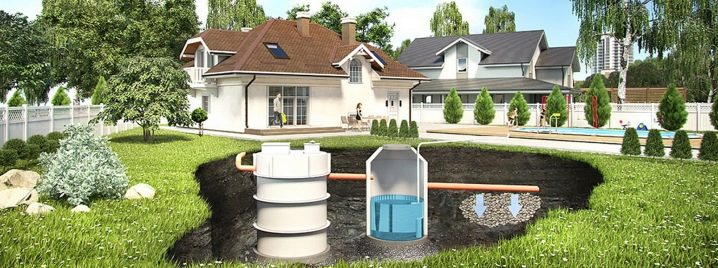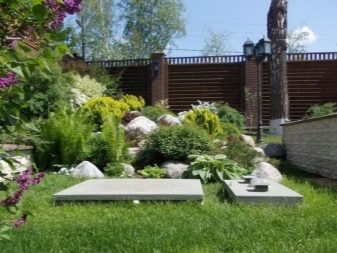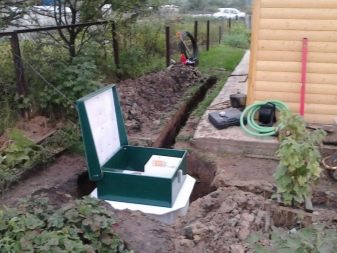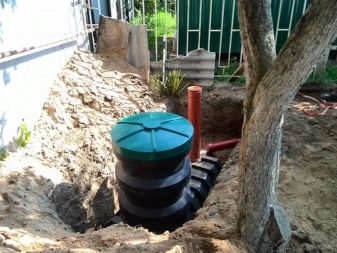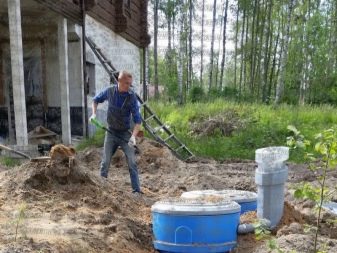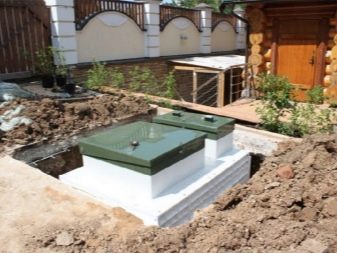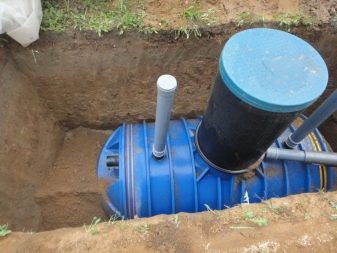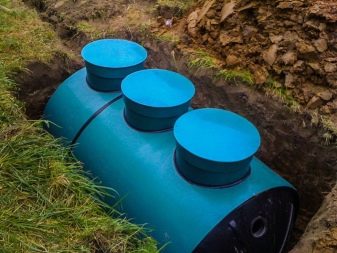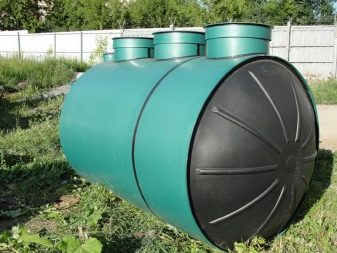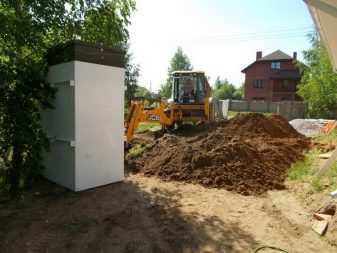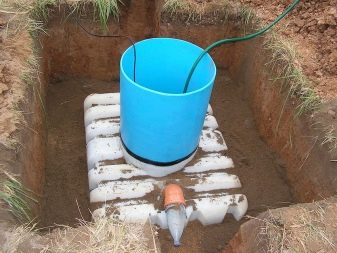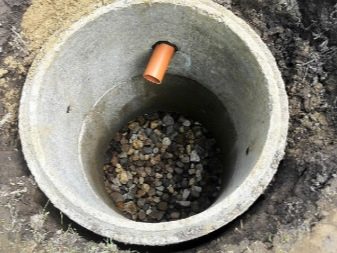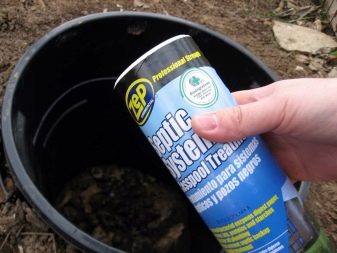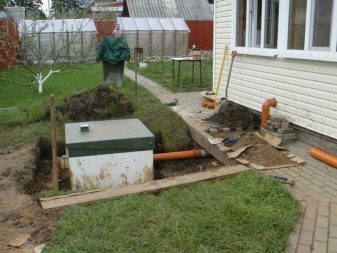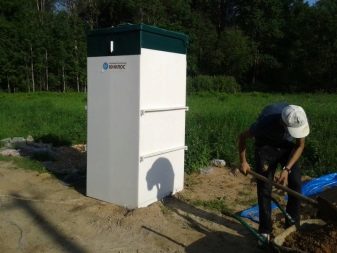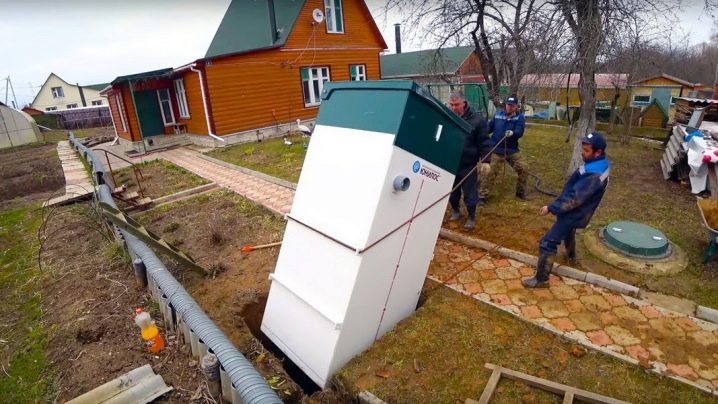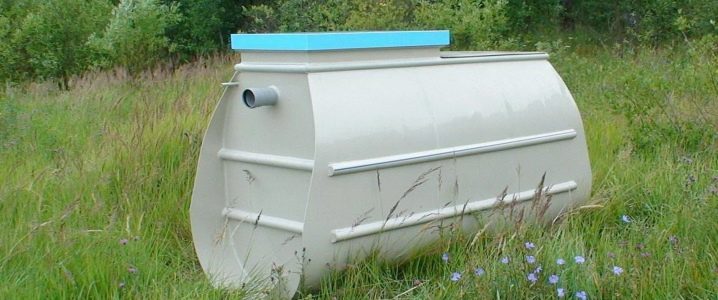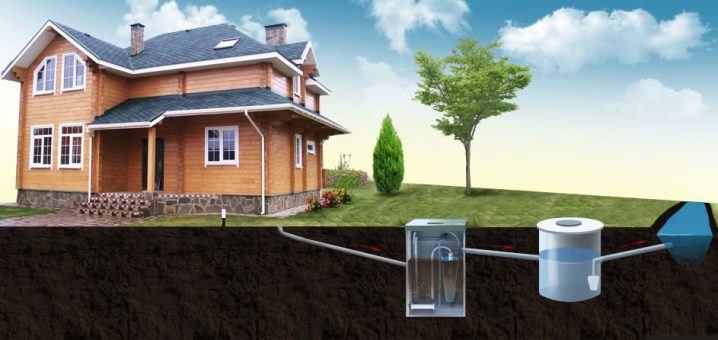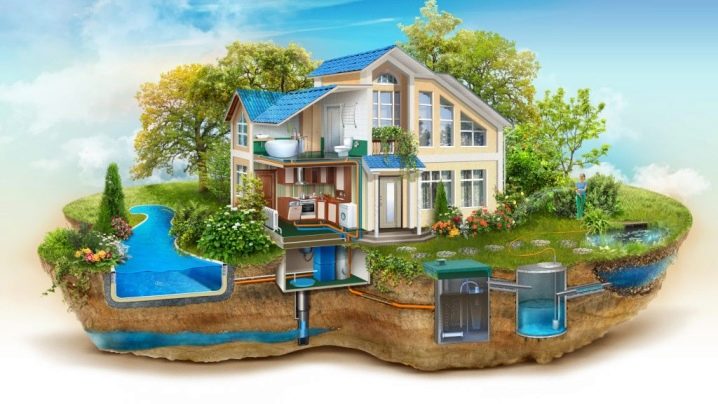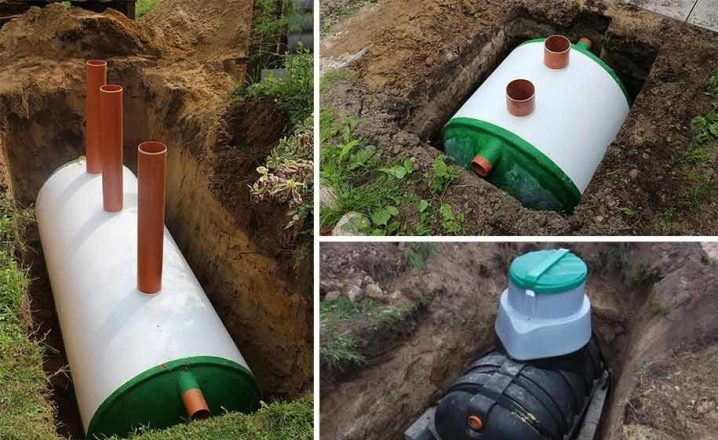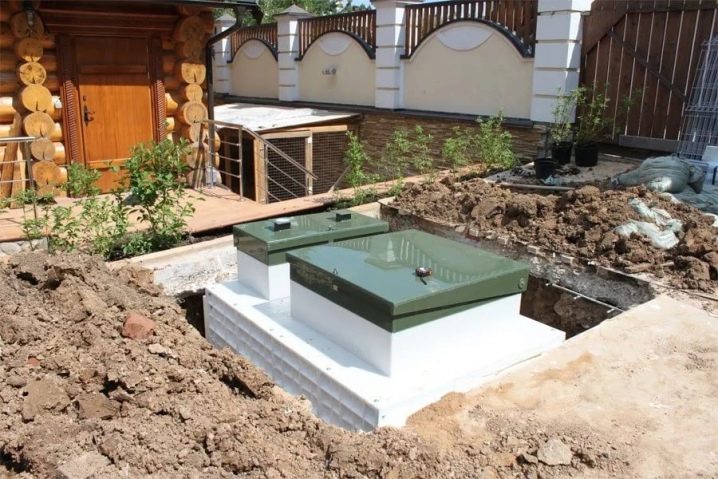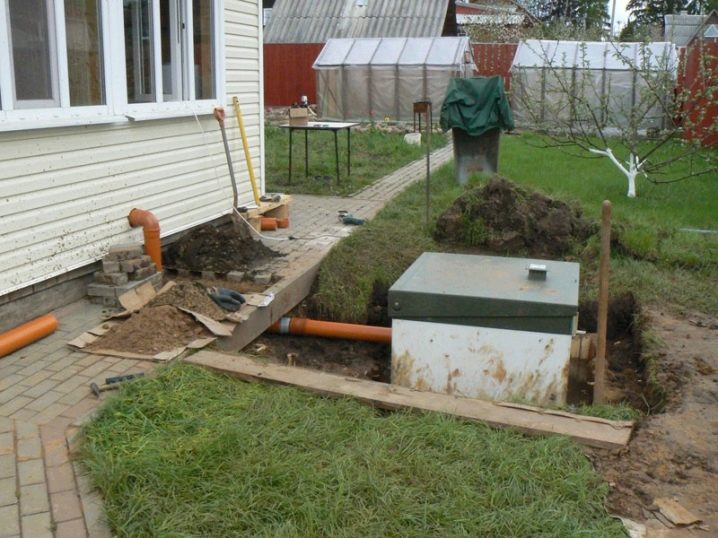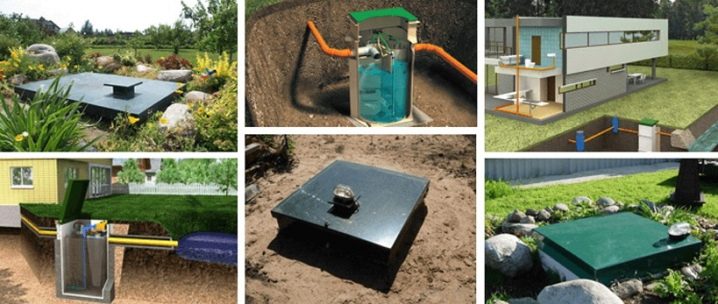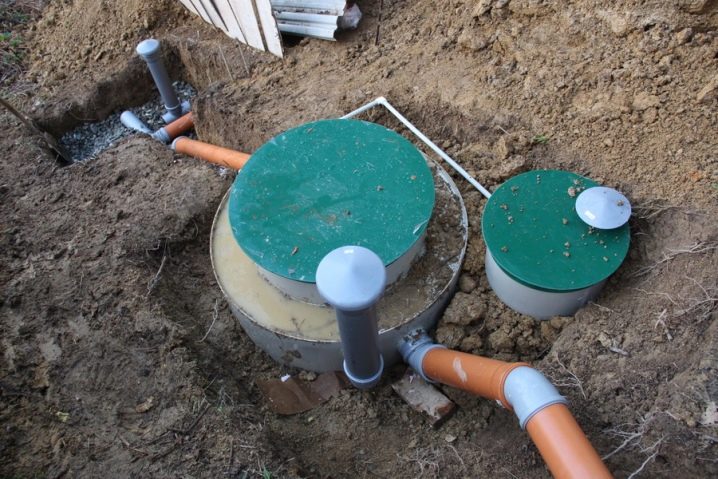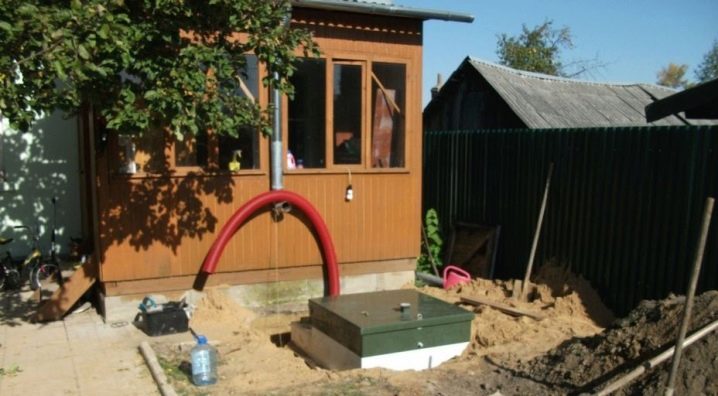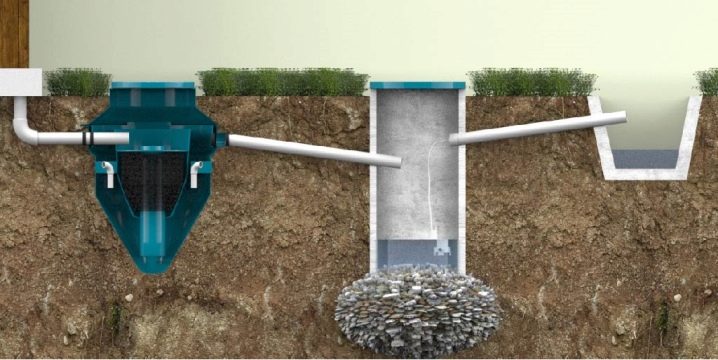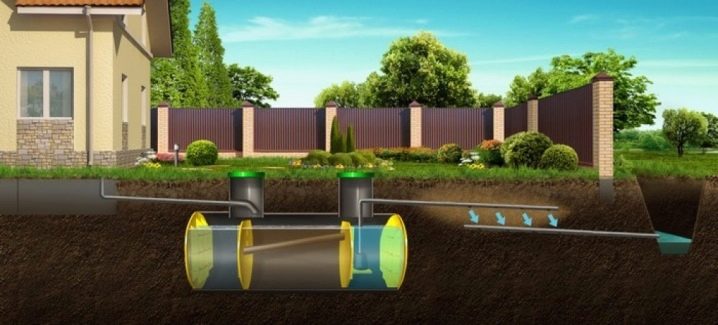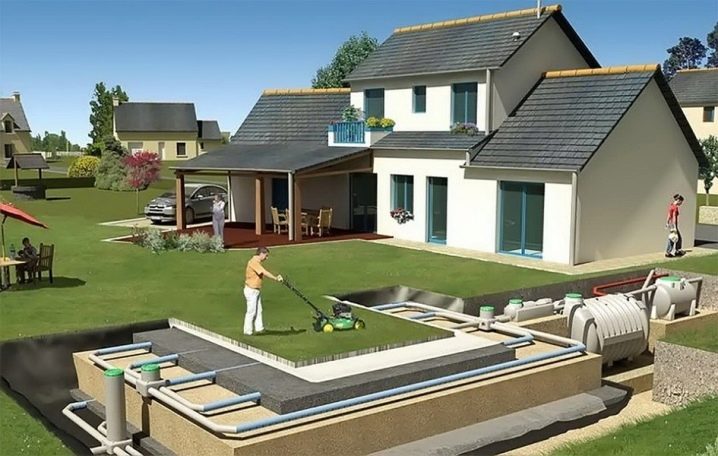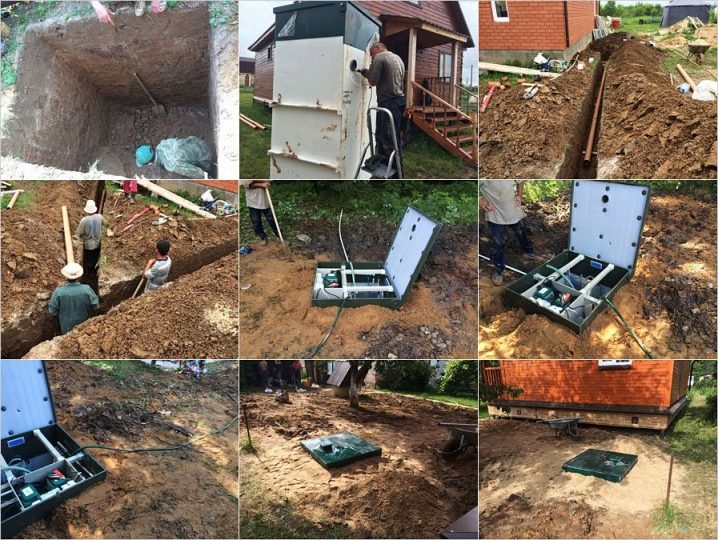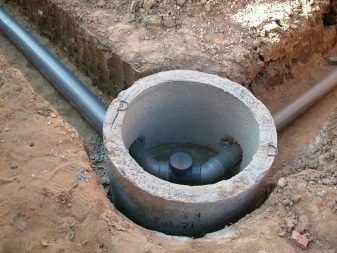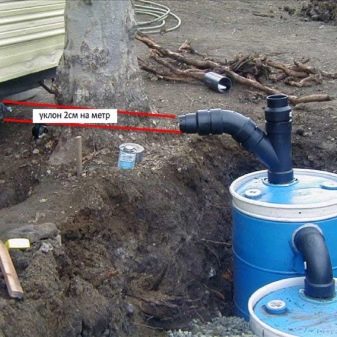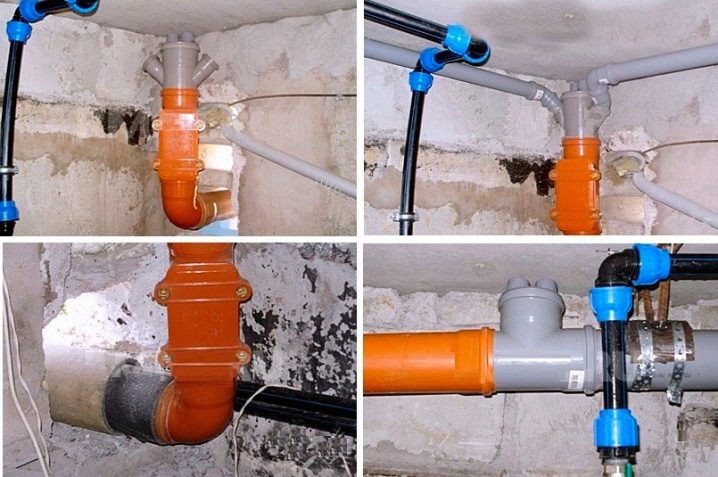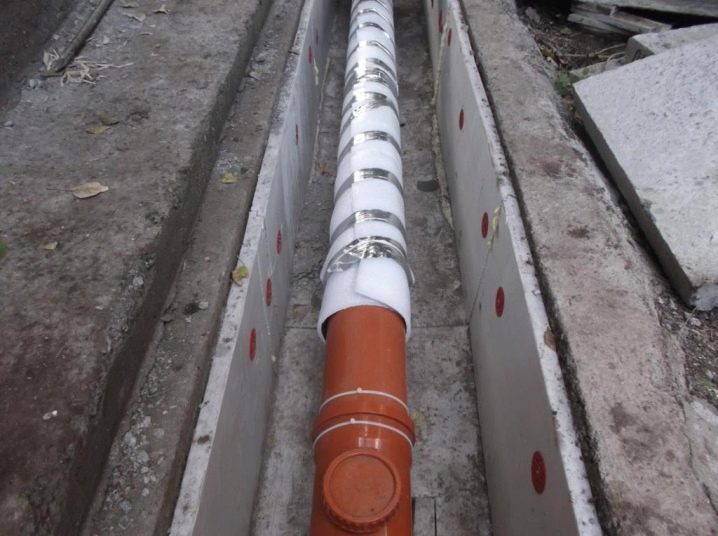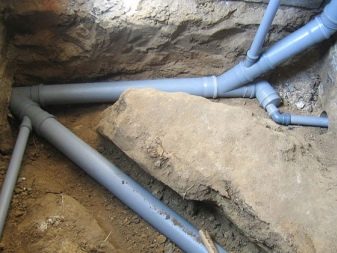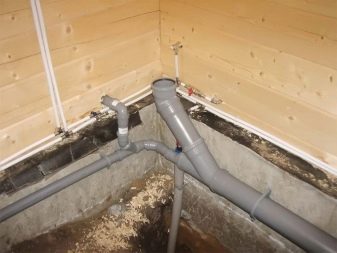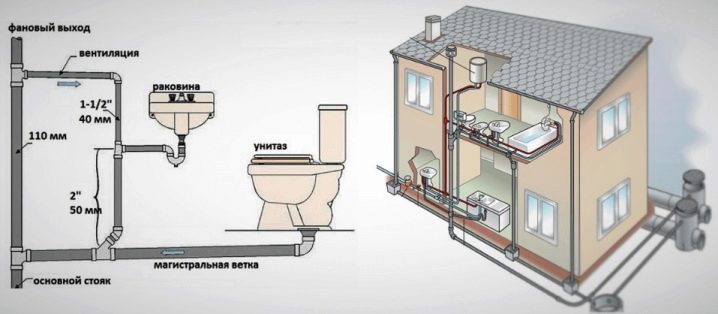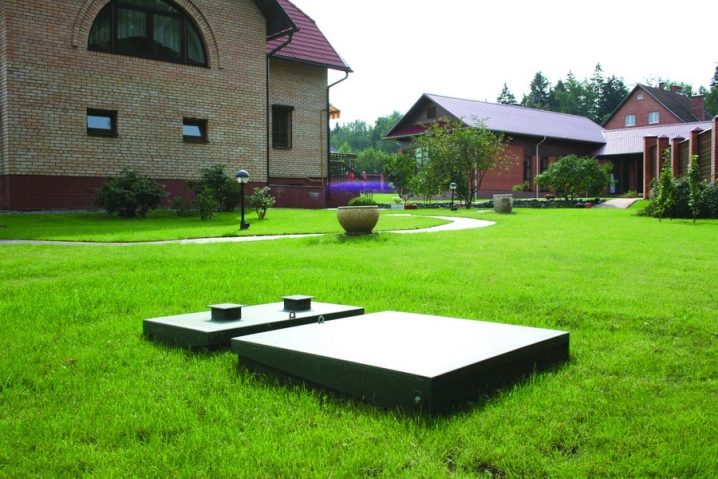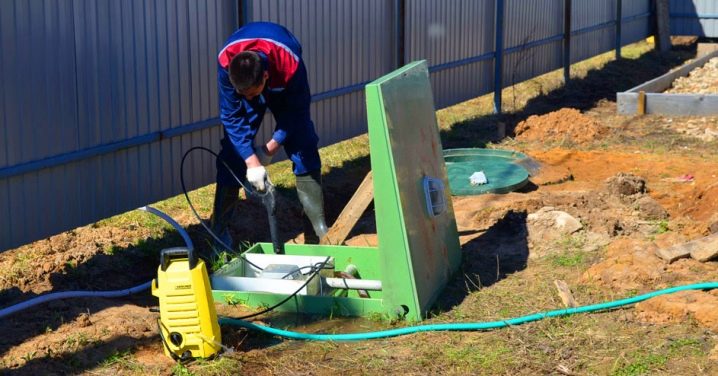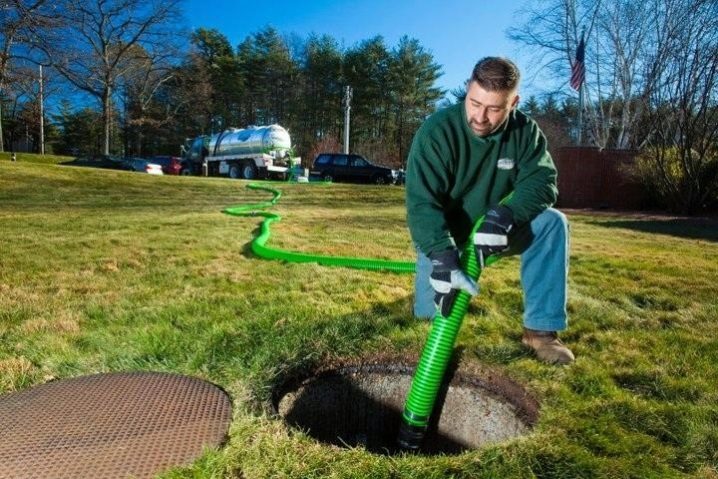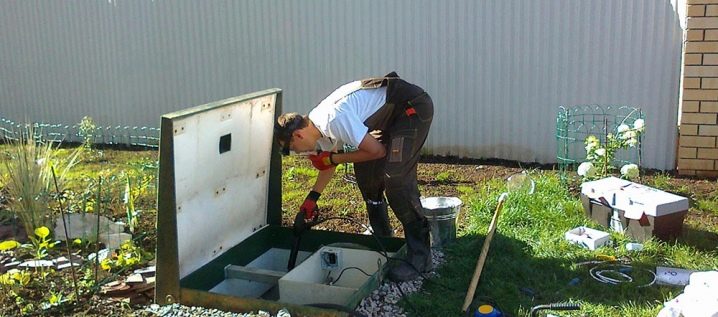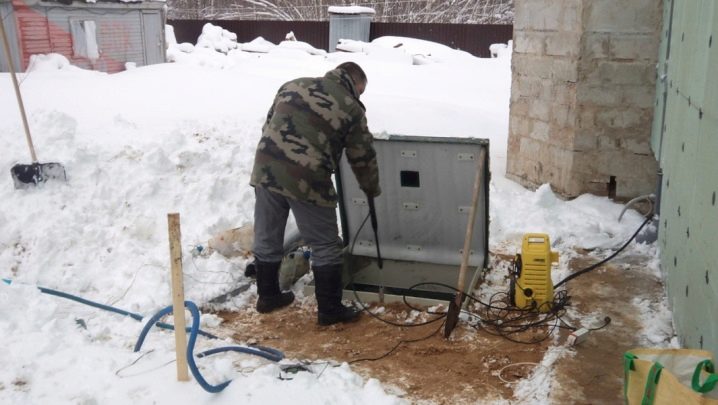Autonomous sewage: principle of operation, tips on choosing and installing
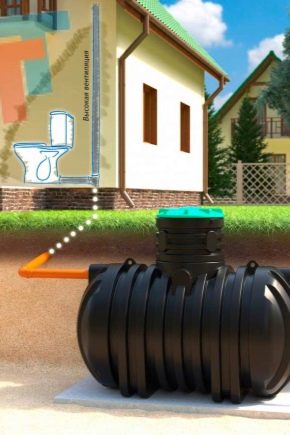
Centralized sewage system - one of the most significant achievements in the field of engineering structures. But not everyone can enjoy its benefits. Then a separate type of system comes to the rescue, which has its own features and nuances of the device.
What it is?
Autonomous sewage is significantly different from centralized, and helps out in cases where serious highways are not yet stretched.
A similar situation arises in:
- garden villages;
- villages and villages;
- a number of neighborhoods, especially the recent construction.
The simplest solution to the problem, known for many centuries, is the cesspool. But, despite the simplicity (for the arrangement, by and large, only a shovel and a few hours of free time are needed), it has more drawbacks than advantages. The cost of pumping liquid effluent is many times higher than the payment for the same volume of water obtained from the water supply system. Since there is no tightness in principle, there is a threat of infection of people and animals, infection of the area with harmful microorganisms. In the event of an outbreak of infection, as well as contamination of groundwater or open water, criminal prosecution is likely.
Silting the walls of cesspools gradually increases the need for pumping, the arrival of the tank is required more and more often. This solution is not at all aesthetically pleasing and creates a lot of unpleasant odors. Drainage only partially solves all these problems. Therefore, the overwhelming majority of people are now trying to use sewage storage tanks. Their other name, familiar to almost everyone, is a septic tank.
Single-chamber system - the simplest type of septic tank. It works like this:
- sewage is internally settled;
- they are kept in a closed volume;
- almost no mixing;
- the duration of exposure is 60-72 hours.
But the structure and principle of operation of the “real” local hermetic sewage system is somewhat different. A local wastewater treatment plant necessarily implies not only mechanical, but also biological wastewater treatment. The level of performance in such devices rises markedly. In any case, it is imperative to calculate the total demand for the treatment and accumulation of waste.
Differences between autonomous sewer systems may be due to:
- different performance;
- wastewater treatment rate;
- depth of wastewater treatment;
- the number of cameras;
- cleansing method;
- site requirements;
- protection from soil waters and so on.
Almost all autonomous sewers use aerobic bacteria. These organisms allow much faster treatment of wastewater, rather than settling in classic septic tanks. There is no need to be afraid of problems: the process is the same as in natural decomposition, only it is accelerated and controlled. Oxygen is continuously present in the volume being cleaned. The level of cleaning reaches 98%, which is quite enough for irrigating the garden and the garden, washing vehicles or the floor in the house.
What is different from a septic tank?
Logically - nothing.After all, they solve the same problem, albeit in different ways. The septic tank is much cheaper than a full-fledged cleaning station, but its difference is due to the fact that wastewater treatment takes place without oxygen. As a result, even if the system works perfectly, it is able to clear the sewer drain by 75%, not more. Be sure to need auxiliary cleansing agents that complicate and increase the cost of the equipment.
Therefore, the cheapness of septic tanks is seeming, “in its pure form” they are not able to release water from polluting agents even to the extent that it is suitable for irrigation. Additional cleaning elements take up a lot of space on the site. They also need to be updated every few years. This will cause additional costs from the owner. Therefore, despite the increased one-time investments, full-fledged autonomous sewage system is more profitable and more practical.
Popular options
The number of firms offering autonomous sewage systems is very large. The benchmark for the consumer is, above all, the rating of various systems, which allows not to pay attention to overtly failed and unsuccessful solutions.Important: any aerobic systems require stable current acquisition.
Without it, neither pumps nor compressors will be able to complete their task.
- Biological treatment station received quite significant popularity. "Biodeka". It implements the principle of sanitation of sewage using suspended sludge. He is the medium in which aerobic microorganisms feel well. The creators were able to achieve the placement of all the working parts in a monolithic case. Foamed polyethylene is used for the manufacture of this cylindrical product. The mass of the structure does not exceed 150 kg, and the amount of automation is minimal, which significantly reduces the cost of sewage. The aerator and the Biodeka pump work continuously, which reduces the risk of airlift overgrowing to almost zero.
- The system is a serious competitor of Biodek. "Topas". Its manufacturers claim that they managed to achieve cleaning of drains up to 99% simultaneously with a decrease in current consumption. There are two cleaning cycles: the mechanical and biological stages.
First of all, solid contaminants and relatively large debris are filtered.From the primary chamber, wastewater is transferred to a reservoir populated with anaerobic bacteria. Stated that they are selected in such a way that the organics do not remain at all, all of it is completely split. Topas models differ in performance levels. The difference between the two is also how deep the sewer pipe passes.
Both gravity and pump drain are available. But it is worth considering that these modes can not be applied simultaneously. We'll have to make a choice before laying the station in the ground. Replacing the work method later is very difficult.
- The top three guaranteed to enter and "Junilos Astra 5". Such a wastewater treatment plant was originally designed for two cleaning modes. Naturally, mechanical cleaning precedes the disposal of dangerous biological factors.
Designers say that they managed to insure their development against violations during the supply of electricity, including voltage spikes. If necessary, you can remove the accumulated sludge manually. Therefore, even a failure or inoperability of the built-in pump will not entail unpleasant consequences.
Important: the selection of a suitable option by rating is not everything. Only by taking into account all the conditions in which the autonomous sewage will be operated, problems can be eliminated.
So, "Topas" can be put in any soil, regardless of the height of the rise of groundwater. When creating the case used high-strength polypropylene, reinforced with special ribs. The period of operation is at least 50 years. The developers of "Yunilos" also preferred polypropylene. In Astra 5, membrane-type aerators are mounted, which need to be replaced at least 10 years even with intensive use.
Aeration occurs intermittently. This technique significantly increases the efficiency and allows you to simultaneously improve the quality of processing. When pumping sludge structure is not broken. Important: "Yunilos Astra 5" is necessarily operated only when creating filter fields. Without them, it is impossible to provide an adequate level of security.
Reviews of the owners show that Astra 5 does not tolerate intense floods. The system simply squeezes up. This model does not create any other problems.
Consumers give high marks to the Tver complex, which is a bit more expensive, but is quietly going through a significant spring flood. But once again we will repeat: just in case it is individual, and consultation of experts is required.
How to choose?
The choice of autonomous sewage is largely determined by the characteristics of the scope of application. So, for giving and a private house (cottage), the basic requirements are quite close.
The system must cope with the processing of all waste that comes in:
- from the kitchens;
- from toilet bowls;
- from baths and sinks.
Obviously, underground work significantly increases the cost and complexity of work. It is required to think over everything in such a way as to minimize the total length of pipes, the number of turns, intersections and inclines. The fewer the connections, the simpler and more reliable the system. It is necessary to use official plans for cottages and infrastructure. The location of all drain points is necessarily thought out, if necessary - by floor.
It is recommended to make a drain between the toilet and the collector no longer than 1 m. If possible, the drain points are as close as possible to the risers. Ceramic brick chambers (silicatewill not work). Much more durable than plastic, which must be resistant to aggressive substances.
Fiberglass elements are somewhat more expensive than simple plastic and metal, but they are very reliable. With regard to purification methods, the biological approach has long been recognized as much more effective than chemical and mechanical methods.
All these points need to be considered when selecting an autonomous sewer.
Still need to consider:
- how exactly the plumbing will be installed;
- what plumbing fixtures will be supplied;
- how big their total, one-time and daily productivity (in general and for each point);
- how is the pipe distribution inside the serviced premises organized?
The most modern sewer systems can be put near the house. Another important point is the specific levels of water release. Professionals advise you to think about the relief of the territory and how the water supply is organized. You also need to take care of the implementation of sanitary standards. It is best of all when the choice of system and features of its installation are coordinated with bodies of sanitary inspection.
Autonomous sewers in cottages are always “personal” (each is strictly for “its” cottage). Two more important points are the fast, reliable execution of the main tasks and an acceptable price.
If increased reliability is required, it is worthwhile to choose airless systems based on the biological principle of purification. Such devices need to be cleaned 1 time in 24-36 months. They are completely independent of electricity and can be used even where it is absent or comes irregularly.
The obvious disadvantage: an anaerobic system is technically and economically justified only where there are already absorbing wells, filter fields and other infrastructure. Additional organization of these elements is very expensive. Autonomous sewage of this type also requires the regular arrival of sewage trucks. And for them you need to prepare the access roads. In addition, there are strict restrictions on the distance from houses and gardens, from the borders of plots, reservoirs.
Complexes of deep biological treatment impose much lower requirements for locations. The size of such structures is relatively small, and the scope of work during installation is noticeably reduced. The need for additional consumables also decreases.Installation is done on its own, without the involvement of specialized machines of various kinds. In addition to the increased cost, the lack of deep-cleaning complexes is only the need for pumping 1 time in 4 months.
When choosing a system, you should immediately be interested in whether smells arising in the process of work are eliminated.
Another important points in the selection are:
- power (volume and speed of the processed waste);
- reliability (probability of failure);
- temperature conditions;
- earthworks;
- the need for a foundation;
- occupied territory.
It should be said about the pipes that will be used in conjunction with the sewer system. Structures made of fiberglass in Russia are used quite rarely, due to increased prices. But as practice shows, the opinion of their high cost is wrong. In the end, everyday maintenance is much more beneficial than correcting defects and the subsequent replacement of rusty steel. For your information: fiberglass has been actively used in military pipelines since the mid-twentieth century, which directly confirms its high quality.
The low density of the material does not prevent him from having a very high strength.Fiberglass is made of glass fiber with special additives for mechanical bonding. Polyester or epoxy resins are used as such additives. The choice between the components is determined by the technology used and how the pipe will be used in the future.
Polyester resin is more in demand than epoxy. It is not only impermeable to aggressive components, but also exceptionally resistant to corrosion processes. The accumulation of sediment in the internal volume is also excluded. Problems can arise if the fluid warms up more than 90 degrees or is under pressure (pressure) of more than 32 atm.
But in the private autonomous sewage system such parameters are unattainable, because there you can safely use the polyester variety of pipes. But the epoxy pipe for domestic sewer networks excessively perfect and prohibitively expensive.
But, apart from the material of the pipes, the differences between them are also related to the production technology. There are two options - winding in continuous mode and centrifugal molding. The higher the requirements for durability and mechanical strength of products, the more layers must be in the pipeline.You can make three layers.
In everyday use, the best results are given by a two-layer construction. One layer is not reliable enough. Three layers are needed only where there is increased pressure and / or high temperature. Not even in all industries such designs are in demand.
Therefore, if someone suggests using such elements for the house, it’s better to part with the builders. They either poorly understand the essence of their work, or, on the contrary, they understand very well, but they want to get more money.
System installation
Installation of an autonomous sewage system does not begin with the work itself, but with charting and planning.
Immediately take into account:
- average water consumption per day (the reservoir should contain liquid for 72 hours of use);
- the number of drain points;
- plot relief;
- location of the main objects on the site and near it.
Both clearing, and accumulative sewer capacities are recommended to be put in the lowest points. Be sure to take into account the level of groundwater, which should not be polluted.
You also need to position the sewer at a strictly defined distance from:
- drinking water sources;
- highway and railways;
- trees and shrubs;
- any windows and doors;
- other objects that need sanitary protection or may themselves violate the integrity of the pipes.
Such distances are maintained not only from tanks, but also from all pipes, if only this is possible. Properly executed scheme takes into account all the pipelines (water, gas, heating, ventilation), because it is necessary to coordinate the location of the sewer with them. The power of the sewage system must be made so that it can “serve” all those who constantly live in the house and at the same time periodically visit it.
When installing with your own hands, it is desirable to strive for the most straight line, but this is not always possible. However, the terrain and the need to connect additional taps can well be taken into account and make the right decision. Since any rotation and intersection (tube insertion) is a potential place for blockage, it is necessary to abandon abrupt changes in the course of sewage.
When installing, you should use tees and crosses oblique format. Along with them, use bends that are located at an angle of 15 to 45 degrees.But even this method does not give a full guarantee. Therefore, all points where the direction of the fluid changes, must be equipped with wells for revision.
When using PVC pipes for sewage, inside the house they must be gray in color, and outside the house they must be red. It is recommended under all sidewalks, and especially under access roads, garages and in similar places to put only cast iron pipes of the highest strength. In order for the fluid flow not to be too slow, it is advisable to maintain the slope of the line throughout at least 2%. But too sharp a roll is contraindicated, because it can create additional problems. Important: laying of external routes in trenches is allowed only at a depth greater than the line of soil freezing.
It so happens that this is impossible, then you have to use enhanced thermal protection. An exception is made for the installation of sewage in a layer that does not freeze through. Any metal pipes should be laid so that they are reliably protected from contact with moisture. At the most difficult points, the inspection wells should be equipped in any case. They are put on 1 piece for every 10-15 m of the sewer route.
To divert sewage from the sink, you need to use pipes with an internal cross section of 5 cm. But the connection to the toilet bowls and collectors implies the use of channels of 0.11 m. The slope in these routes also differs: 3 and 2% respectively. To avoid fluid backflow, check valves are mounted. We must immediately make a decision: whether such a valve will be one for the sewage system or it is better to put several at once - one for drainage.
Inside the house it is recommended to use siphons (otherwise called hydraulic gates). They reliably block the spread of unpleasant odors that have no place in the house. Particular attention should be paid to places where internal and external sewer lines intersect. When installing a sewer complex in the finished house, the discharge point is usually made above the ground. An indispensable requirement for this is a reliable cover from the cold.
The pipe on release is always mounted with a sleeve, whose role is protection against mechanical defects of various kinds. For the formation of sleeves usually take larger pipes. It is enough that their diameter is 100-150 mm greater than the envelope of the main highway. Such proportions ensure the laying of the exhaust pipe.Another point - the sleeve inside the house, and on the street should go out of the wall at 0.1 m.
When the hole is drilled and the sleeve is mounted, you need to remember about the mandatory slope of the communication line. The slope is calculated with respect to the septic tank.
There is another nuance - the relationship of sewage and ventilation. The ventilation duct stabilizes the pressure so that it does not change in an undesirable way when it is drained. In addition, the ventilated passage allows to reduce the saturation of the atmosphere with harmful gases. But not only in this case. After all, when the air timely and fully enters the rarefied area that appears when the sewers work, the characteristic sounds that cause unpleasant associations are prevented.
And for the system itself, ventilation also turns out to be an important help: it is this that reduces the threat of water hammer. The traditional scheme involves the installation of fun pipes, the free edges of which extend to the roof of the house. The fan channel should rise above all other pipes, even their smoke variety.
The funnel should be at least 400 cm from the nearest windows or balconies.It is recommended to choose for it elements of the same diameter as the riser inside the house. Most often it is 11 cm, which allows you to maintain the desired traction and prevent the channel from clogging up when ice accumulates in winter. But such a simple device for autonomous sewage, even in private homes, is becoming increasingly rare. Gradually, the use of air valves has become popular.
A valve modification determines whether it is only able to let in air from the outside or can also release it. In many cases, the valves are mounted exclusively on the taps of washing machines. It is there that the rapid discharge of water occurs with the appearance of pressure. Because much higher than in other places, the risk of rapid changes in pressure. All this is required to take into account, but sometimes it is much easier to turn to professionals.
Operation and maintenance
Even if the autonomous sewage system is configured as correctly as possible and recycles the sewage very efficiently, all the same, some amount of solids remains. Periodically, they must be removed and regular technical inspections carried out. Both sludge and piping are required to remove sludge.If you ignore such work, the sediment will soon be a very strong substance, similar to clay. Remove such deposits without specialized devices will not work.
Regular pumping also helps to extend the life of the sewer system. For cleaning use special fecal pumps. At the bottom, the presence of silt masses is likely. Removing them helps ordinary shovel. For additional flushing, water is applied in the form of a jet under considerable pressure.
The water in which the last contaminants have dissolved is pumped out again by the pump. To remove it, the same tank is used, into which the main volume of wastewater was transferred. Important: you can not just pour this water into a pond or somewhere else. It must be completely disposed of. Another requirement for work - the indispensable use of personal protective equipment.
It is extremely inconvenient and dirty to clean the simplest septic tanks and earthen holes by hand. And when using modern cleaning stations, the situation differs little. Therefore, in many cases, sooner or later they call a cesspool tank.Along with pumps, cars of the latest generation are equipped with devices that flush the tank. As a result, cleaning will be much more efficient.
Removing dirt from the complete cleaning station, you can work with your own hands or with the help of special equipment. Tools required are the same as in other cases. But only an aerobic stabilizer is required. The extracted sludge can be used in agriculture as a very valuable fertilizer.
In order to use wastewater treatment systems for as long as possible and get the best results from them, it is recommended to follow simple rules.
- The design level of water consumption (or the indicator specified in the technical documentation) should not be exceeded. It is categorically unacceptable to dump in the local sewage waste from construction and repair, as well as all other things that will not decompose in water under the action of bacteria. For your information: it is undesirable to throw the same items into the city sewer.
- Another categorical ban: the discharge of alkalis, acids and other caustic substances. Under the influence of such compounds can be impaired vital activity as aerobic,and anaerobic microorganisms.
- If the biological treatment station interrupted its work for a long time, special activators are added to it. When blockages appear, various methods of cleaning can be applied, but in any case the choice is up to the master.
The handling of the sewage system "Unilos Astra" has its own characteristics. The manufacturer indicates that there should not be any items from the sphere of personal hygiene, as well as pet hair and own hair. Also banned are remnants of provisions and synthesized substances, petroleum products and alcohols (in pure form and mixed with other components).
When contacting a company that promotes services to work with independent sewers and septic tanks, you must be very careful not to make an irreversible mistake. Real professionals always give a written guarantee and conclude an agreement, where they clearly state the services, the term of their provision and payment for each type of work.
In addition, the reason for alarm is the difference in the price, which the visiting master calls, from the one previously called by phone or indicated on the website.Still qualified organizations always have a full range of necessary spare parts and tools. And they, in principle, do not charge an increased fee for urgent service, do not try to postpone the already agreed visit. Professionally working customer service can replace the compressor and sensors, valves and injectors.
She should also be able to:
- to preserve the autonomous sewage system for the winter or in case of a long absence for some other reason;
- re-open it as soon as the need arises;
- correct defects in automation or change it completely;
- clean nozzles and airlifts.
And if at least one of these items on the site is not stated, this is a reason for refusing the services of the organization. From the cleaning or storage system to the house should remain at least 5 m. The distance to the wells, wells or other objects of water intake should be at least 30 m, otherwise safety will not be ensured.
With regard to septic tanks "Topas", their manufacturer indicates very clearly those things that should not fall into the sewer. So, there is no place for polyethylene, candy wrappers, rubber and other substances that do not decompose biologically.
You can not send there either:
- cleaning vegetables, vegetables and mushrooms;
- water containing potassium permanganate and other oxidizing agents;
- wastewater, including chlorine;
- any medications, including veterinary;
- antifreeze and engine oils.
As for pet hair, the developers of “Topas” are not so categorical. They indicate only that it can not be dumped in large quantities. That is, if several fluffs accidentally fall into the stock once every few months, you should not worry. Toilet paper of any brand can be disposed of in the "Topaz" without any problems. Every 2 weeks is required through the toilet to add a certain amount of special powder.
To learn how to install an autonomous sewage system with your own hands, see the following video.
